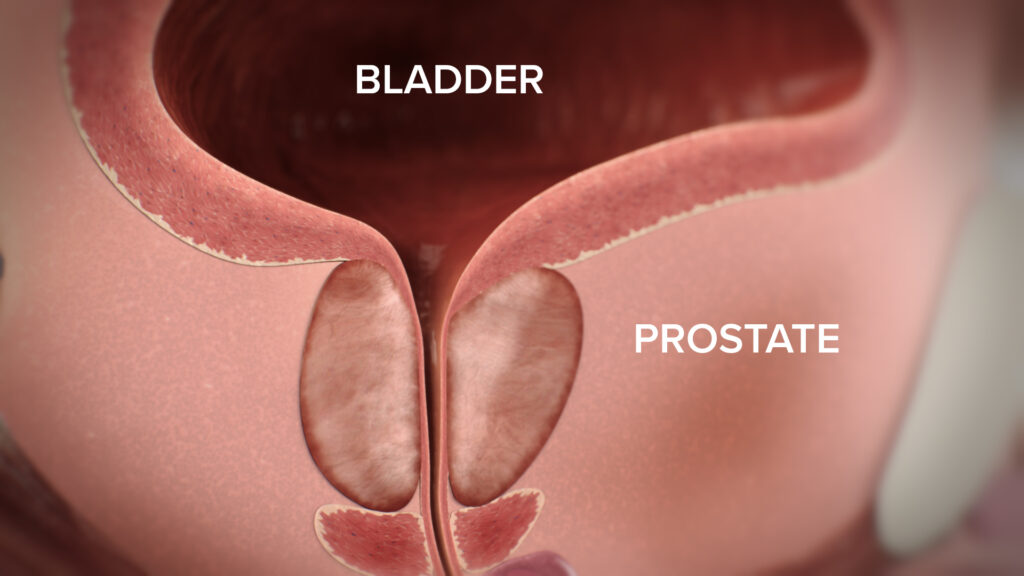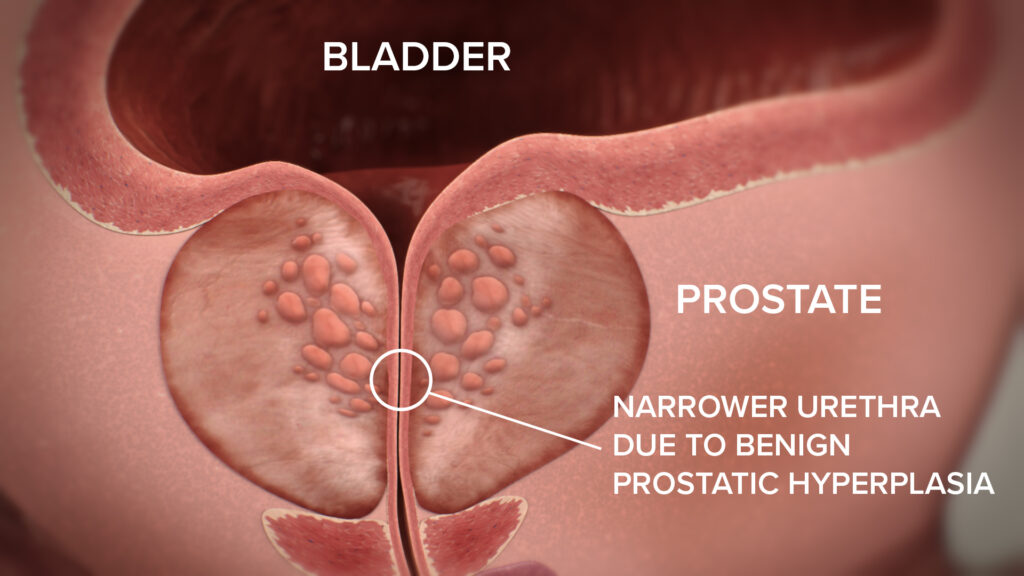What is benign prostatic enlargement?
The main function of the prostate is to produce a secretion that is needed for sperm mobility and this is crucial for the sperm to be able to fertilise the egg. The prostate of a healthy young man is about the size of a walnut. It is located just below the bladder and encircles the urethra.

Benign prostatic enlargement (BPE) occurs when the cells in the prostate increase in number. It is a natural part of ageing and usually begins between the ages of 40 and 50.
Normal prostate gland

Benign prostatic enlargement

As the prostate gland grows larger, it can squeeze the urethra and/or bulge into the bladder. This narrows the urethra passage, making it more difficult to urinate and often result in disrupted sleep. It often has a negative impact on quality of life. It can also have a negative impact for your life partner.
Benign prostatic enlargement should not be mixed up with prostate cancer as they are completely different conditions.
Benign prostatic enlargement (BPE) affects about half of all men over the age of 50 and up to 80% of men over the age of 80.
Common symptoms of benign prostatic enlargement:
Hard to get started urinating
Weak urine flow
Need to empty the bladder frequently (less than 2 hours between toilet visits)
Difficulty waiting to urinate when the urge comes.
Need to get up several times each night to empty the bladder
Experience that the bladder is not completely emtied
Interrupted urine flow
After dripping
Symptoms of BPE often have a negative impact on quality of life. The constant need to run to the toilet, not being able to sleep well at night and avoiding social activities are examples of how it can impact quality of life.
How serious are my symptoms
Researchers have developed a test in the form of a self-assessment scale to help you judge the severity of your symptoms.
The test is not intended as medical advice or to replace a doctor’s assessment and care. Only your doctor can diagnose whether you have BPE and evaluate your individual condition.
There are other conditions besides BPE that can cause urinary tract symptoms.
The test is called (International Prostate Symptom Score)
